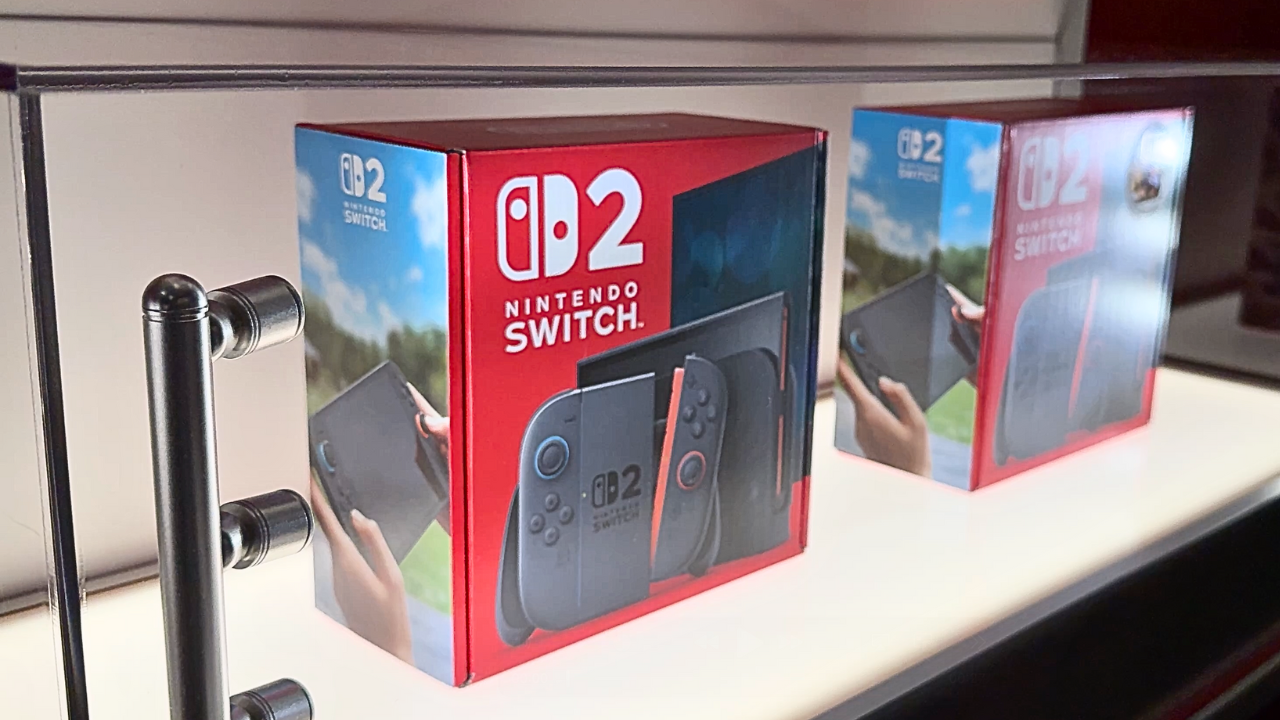I recently attended the Nintendo Switch 2 Experience in Los Angeles, where I got hands-on time with Nintendo’s newest handheld. And while there’s a lot to be impressed by, I walked away with a very clear takeaway:
The Nintendo Switch 2 isn’t for everyone.
But for a specific kind of gamer? It might be exactly what they’ve been waiting for.
First Impressions: The Hardware
The first thing you’ll notice about the Switch 2 is the screen. It’s gone from 7 inches on the OLED model to 7.9 inches. On paper, that might not sound like much—but in your hands, it’s a noticeable upgrade. It’s like watching something on your phone versus a small tablet. Everything just looks better, and playing games is more enjoyable.
Games also benefit from the bump to 1080p resolution, with more crisp and refined visuals. Details like textures and lighting pop more clearly, and the overall experience feels more immersive and premium—less like a toy, more like a true handheld display.
Joy-Con Redesign: A Better Fit
The larger screen also means larger Joy-Cons, and for me, that made a big difference in comfort. The Switch 2 still has a flat body—there’s no built-in grip or ergonomic shaping—but I was able to get all of my fingers on the device easily, which made longer sessions feel more natural.
Nintendo also ditched the rail system used in the OLED model. The new Joy-Cons are held in place by strong magnets, with a release button on the back. I was skeptical at first, but while playing Super Mario World, they felt completely secure—no wobble, no movement. I forgot they were even detachable, which is a good thing.
The Joy-Cons themselves feel more solid and premium. They’re slightly larger, have a better texture, and the buttons and triggers feel more refined. Not a drastic reinvention, but definitely an improvement.
Audio and Microphone Upgrades
I couldn’t fully evaluate the audio quality due to the noisy event environment, but according to Nintendo, the Switch 2 uses stereo speakers with an independent enclosure for clearer, more natural sound.
There’s also now a built-in microphone, which supports noise and echo cancellation along with auto gain control. That should improve in-game voice chat, assuming developers take advantage of it.
The Kickstand: A Step Back?
The one thing I didn’t love was the new kickstand. It’s a U-shaped design with a cutout in the middle—unlike the full-width kickstand on the OLED model.
It functions fine and holds position well, but visually, it feels like a step backward. I personally preferred the solid panel design on the OLED, and also on my Legion Go. The new cutout doesn’t seem to add anything and makes the hardware look a bit less polished.
Dock and Connectivity
The updated dock adds support for 4K output at 60 FPS, and up to 120 FPS at 1080p or 1440p. That’s a big upgrade from the OLED’s 1080p max and makes the Switch 2 feel more like a next-gen console when docked.
Nintendo also added a second USB-C port—one on the bottom, and one on the top. Both can be used for charging or accessories, which gives you more flexibility whether you’re docked, using tabletop mode, or playing handheld.
Pro Controller: Solid, but Unexciting
I also tried the new Switch 2 Pro Controller. It was comfortable, responsive, and well-built—but honestly, it didn’t stand out in any major way.
It lacks the circular D-pad I usually prefer, using a standard cross-style instead. It includes HD Rumble 2, motion controls, built-in amiibo support, a GameChat button (C Button), remappable GL/GR buttons, and a 3.5mm headphone jack.
Everything you’d expect is here, and it’s clearly designed for the Switch 2—but there wasn’t anything about it that made me like it more than my favorite third-party controllers. It works, it’s functional, but it didn’t wow me.
Concerns: Game Optimization and Pricing
As excited as I am about the hardware, there are still questions and concerns.
The Switch 2 doesn’t seem to offer performance modes like you’d find on the ROG Ally, Legion Go, or Steam Deck. There’s no way to toggle between turbo, balanced, or battery-saving modes. You can’t adjust graphics or resolution settings. You’re locked into whatever the developers choose.
That might be fine for first-party titles like Mario Kart, but what about games like Cyberpunk 2077 or Resident Evil? Will they be optimized natively? Or are we looking at cloud-based streaming again?
Then there’s the price of games. Mario Kart World is launching at $80, and while I love Mario Kart, that’s a steep price—especially for a game tied to a single device, with no cross-buy or shared library.
There’s already been a lot of pushback around the $80 price point, and I get it. I don’t see features or value that justify the increase. And for a company that’s supposed to be family-friendly, this doesn’t feel like a family-friendly price.
If you have multiple kids, or you’re trying to build a game library over time, that cost adds up quickly.
So Who Is the Switch 2 Really For?
The Switch 2 isn’t trying to be a handheld gaming PC.
It’s not competing with the Steam Deck, Legion Go, or ROG Ally.
Those devices are about control, flexibility, and customization.
The Switch 2 is about simplicity. You turn it on, and you’re in.
If you love Nintendo’s first-party games and want a plug-and-play system with strong hardware and a clean experience, the Switch 2 might be exactly what you’re looking for.
But if you want OS-level control, system-wide performance tweaking, or cheaper game libraries—you might find it a bit limiting.
Final Thoughts
The Switch 2 is a thoughtful evolution of the platform, not a revolution.
It’s well-built, more comfortable, and feels more premium overall.
But it’s also clearly designed for a specific audience—one that values Nintendo’s IPs, streamlined gaming, and the joy of simply playing.
Are you that kind of gamer?
Let me know what you think in the comments.
